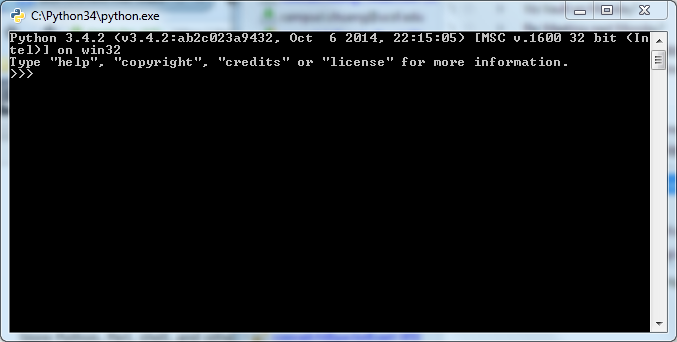
- INSTALL PYTHON LINUX COMMAND LINE HOW TO
- INSTALL PYTHON LINUX COMMAND LINE FULL
- INSTALL PYTHON LINUX COMMAND LINE CODE
To view a list of installed Python packages in your currently active project using the ActiveState Platform, run the following command on the command line: state show packages List Installed Packages with the ActiveState Platform
INSTALL PYTHON LINUX COMMAND LINE HOW TO
How to List Globally Installed Packages vs Locally Installed Packages in Python Output: # packages in environment at C:\Anaconda2_4.3.1:Īlabaster 0.7.9 py27_0 Globally vs Locally Installed Packagesįor information about generating a list of installed packages globally vs locally, refer to: The conda list command can be used to list all packages in a conda environment: conda list If not, then select Installed in the dropdown menu to list all packages. A dropdown box at the center-top of the GUI should list installed packages.Select Environments in the left column.Start the Anaconda Navigator application.To list installed packages in an Anaconda environment using Anaconda Navigator, do the following: Urllib3=1.25.8 List Installed Packages with Anaconda Navigator All packages, including dependencies will be listed in the output. The pipenv lock -r command can be used to generate output from a pipfile.lock file in a pipenv environment.
INSTALL PYTHON LINUX COMMAND LINE CODE


List Installed Packages with Pipīoth pip list and pip freeze will generate a list of installed packages, just with differently formatted results. īefore getting a list of installed packages, it’s always a good practice to ensure that up-to-date versions of Python, Pip, Anaconda Navigator and Conda are in place. Give it a try by signing up for a free ActiveState Platform account.
INSTALL PYTHON LINUX COMMAND LINE FULL
For a complete list of all packages and dependencies (including OS-level and transitive dependencies, as well as shared libraries), you can use the Web GUI, which provides a full Bill of Materials view.

You can also use the ActiveState Platform’s command line interface (CLI), the State Tool to list all installed packages using a simple “state packages” command. The Pip, Pipenv, Anaconda Navigator, and Conda Package Managers can all be used to list installed Python packages.


 0 kommentar(er)
0 kommentar(er)
